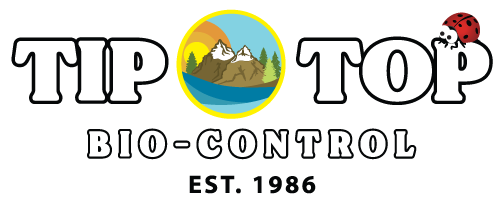10k Trichogramma Mix - Caterpillar & Moth Control - Retail Pouch
Case Count
Couldn't load pickup availability
LIVE DELIVERY GUARANTEE
Release at first sight of caterpillars or moths!
TARGET PESTS
Over 150 moth species including Cabbage Loopers, Cabbage Worms, Codling Moths, Diamond Back Moths, Gypsy Moths, Oriental Fruit Moths, Tent Caterpillars, Tobacco Hornworms, Tomato Hornworms, & more.
DESCRIPTION
TRICHOGRAMMA are tiny parasitoids known for their ability to parasitize eggs of various pest insects, particularly moth and butterfly eggs. No larger than the tip of a pencil and measuring only about 0.5-1.5mm in length, they are hard to see without magnification. In agricultural settings, researchers and farmers often use pheromone traps to monitor their presence. Although TRICHOGRAMMA can vary in color, they are generally yellow or light brown, with a slender elongated body, long thread-like antennae, and delicate iridescent wings. The entire life cycle is relatively short with rapid reproduction and development cycles. Adult females can lay dozens to hundreds of eggs inside hosts, hatching into larvae in about 1-5 days. The larvae will feed on the host as it progresses through development for approximately 5-7 days. When the larvae is fully developed it will pupate inside the host for about another 5-7 days and finally emerge as adults, ready to continue the cycle.
TEMPERATURE
50-95°F
INTRODUCTION RATES
Introduce 1-2 insects per sq. ft.
50,000 to 100,000 per acre
Weekly during moth flight
It's important to note that these release rates serve as general guidelines and may vary based on the specific pest species, the crop or plant being treated, and level of infestation. Proper monitoring of the infestation and the subsequent effectiveness of the released beneficial insect population is crucial for determining the success of the biological control strategy.
HOW TO RELEASE:
- Introduce ladybugs in the early morning, evening, or on a cloudy day when the temperatures are cooler.
- Mist leaves to improve ladybug habitat. Misting the foliage beforehand may improve performance. With ample food and moisture, ladybugs can begin to reproduce immediately.
- Introduce ladybugs at the base of the plants.
- Introduce multiple times throughout the growing season to stay ahead of the pest lifecycle.
STORAGE
Do not store emerged adults for more than 4hrs. Store pupae at 39-46°F for no longer than 72hrs.
PRO TIPS:
Proper identification of the pest species is important. Monitoring the crop closely and introducing beneficial insects early will help in control pest populations.
Pesticides, even wetting agents, and spreader-stickers may adversely affect beneficial insects' survival. Broad spectrum and systemic insecticides are toxic.
WHOLESALE
Guaranteed Sale Program Qualifying Items:
TRICHOMIX-10KRP: 10,000 Trichogramma Eggs on 3 Hanging Cards
Case Count: 6 Units per Case
Free shipping eligibility when ordering 2+ cases.
ITEM NUMBERS
TRICHOMIX-10KRP: 10,000 Trichogramma Eggs on 3 Hanging Cards
TRICHOBRASSICAE-100KRP: 100,000 T. brassicae (Cole/Cold Crops) Eggs on 3 Hanging Cards
TRICHOPLAT/MIN-100KRP: 100,000 T. platneri/minutum (Tall & Short Crops) Eggs on 3 Hanging Cards
Wait to release until Trichogramma have began to hatch. Keep cards out of direct sunlight, in a warm place, until you can see small dots (adult Trichogramma) moving around in the sealed bag. Complete instructions included.
Strategic Considerations:
The best time to release is early morning or evening when direct sunlight will not hit the cards. Avoid releasing on extremely hot, cold, rainy, or windy days.
WHOLESALE














